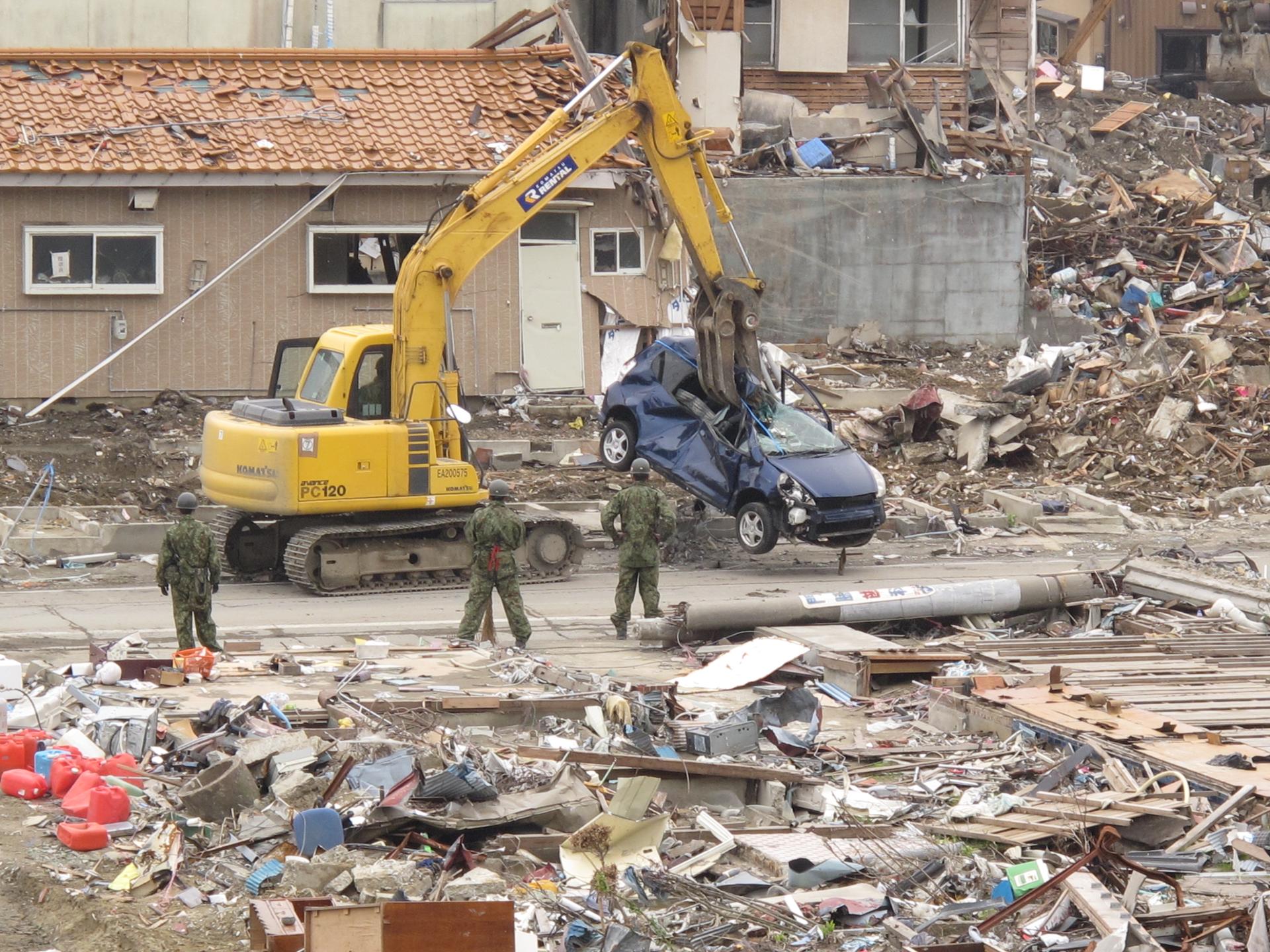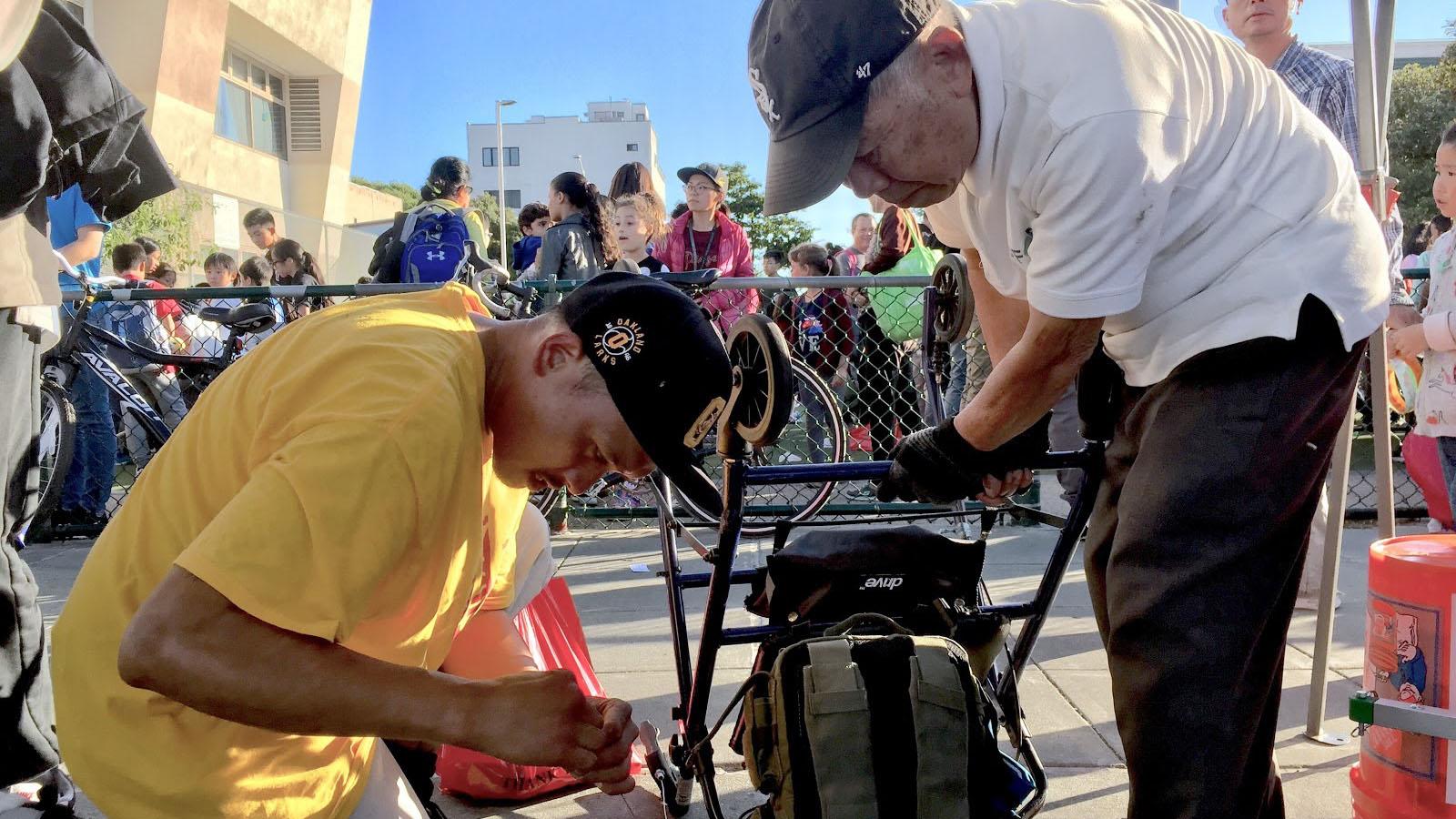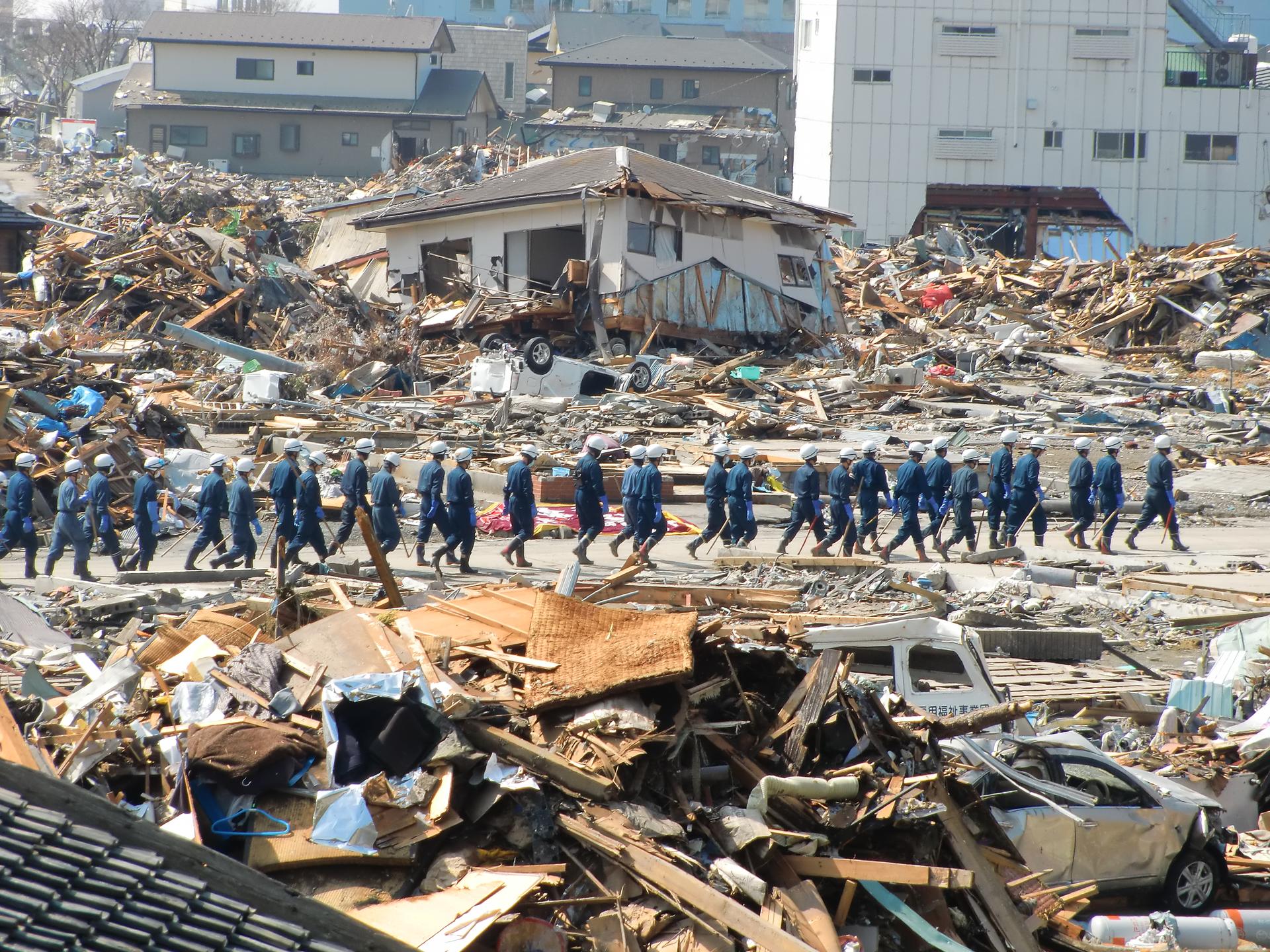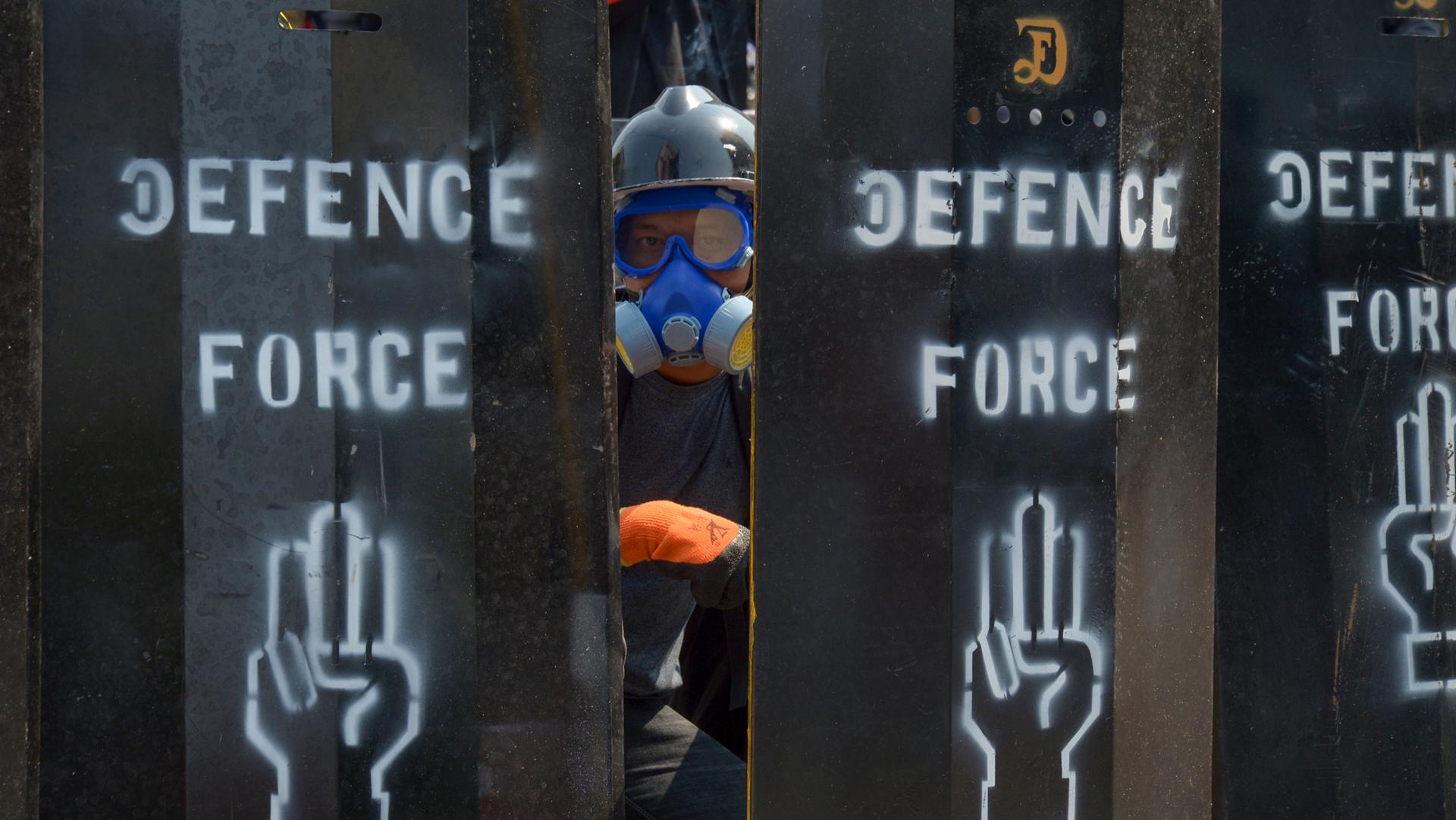The lethal crackdown in Myanmar continues with widespread calls for the violence to end
A protester looks through makeshift barricades in Yangon, Myanmar March 11, 2021.
Top of The World — our morning news roundup written by editors at The World. Subscribe here.
The deadly crackdown on demonstrators, activists and also journalists in Myanmar has continued unabated with at least 10 more people shot to death by security forces on Thursday. UN special rapporteur for Myanmar, Thomas Andrews, called for an end to the use of lethal force and suggested a growing amount of evidence that crimes against humanity are taking place in the South Asian country.
The streets of cities across Myanmar have been filled with protests over a military coup on Feb. 1. Since then, the country’s security forces have engaged in brutal tactics — including using tear gas and committing torture and murder — to quell the uprising where as many as 70 people have now been killed.
Myanmar’s military rulers have also announced new allegations against elected leader Aung San Suu Kyi, who has been detained since the coup. Suu Kyi is accused of illegally accepting $600,000 and 11 kilograms of gold. No evidence was provided.
What The World is following
Nearly a year after suffering one of the worst outbreaks of the coronavirus infections in Europe, the government in Italy is again considering new “red zone” lockdown restrictions for as many as two-thirds of Italians as part of an effort to stop the spread of the virus. The news comes as Italy considers a plan for “COVID-free” trains to the country’s tourist locations, where both passengers and staff will be tested for COVID-19 before boarding.
And, Senegal has been engulfed in deadly protests over the past week over government corruption and a crackdown on political opposition. While some anti-government protesters have set supermarkets ablaze and clashed with riot police — in a rare display of violence in the West African nation — protests have been largely peaceful. Protests were sparked by the arrest of Ousmane Sonko, a popular opposition leader, for disrupting public order and accusations of rape, but analysts believe that the economic impact of the pandemic are also fueling popular discontent.
From The World
It’s been 10 years since Fukushima. What’s it like to rebuild in a city that ‘doesn’t exist’?

On March 11, 2011, a 9.0-magnitude earthquake hit Japan, resulting in tsunami swells that reached as high as 62 feet and surged miles inland, affecting an area that stretched 240 miles along the coast.
Some half a million people were forced from their homes, many in the region surrounding the Fukushima Daiichi nuclear power plant. Nearly 20,000 died, most from drowning. More than a million homes were damaged or destroyed, and damage estimates tipped into the hundreds of billions of dollars.
The World returned to Japan to speak with the Saeki family in Ishinomaki, that host Marco Werman met 10 years ago.
Oakland’s Chinatown finds solutions to hate crimes

Seeing a surge in attacks against Asian Americans during the pandemic, community ambassadors are finding ways to help elders in Chinatown feel safe.
Bright Spot
Sometimes a bit of humor can help us understand complicated issues. This is where Climate Adam — real name Adam Levy — comes in with his YouTube videos about climate science. Levy started his career as a PhD student in atmospheric physics, but he’s traded in the halls of Oxford University for the world of clicks, likes and comments, explaining scientific concepts and debunking climate myths. Levy spoke with The World’s Marco Werman for our climate change solutios segment The Big Fix.

In case you missed it
Listen: 10 years after a disaster and tragedy in Fukushima

In May 2011, just weeks after the Fukushima nuclear power plant meltdown, The World’s Marco Werman visited the port city of Ishinomaki, where more than 3,000 people died after a 9.0 earthquake triggered a tsunami that flattened much of the city. Ten years later, we return to Ishinomaki, after a decade of rebuilding. And, after a year into the pandemic, hate crimes against Asian Americans appear to be on the rise around the US. Also, while the pandemic is far from over, museums are looking ahead to how this period may be remembered.
Don’t forget to subscribe to The World’s Latest Edition podcast using your favorite podcast player: RadioPublic, Apple Podcasts, Stitcher, Soundcloud, RSS.
